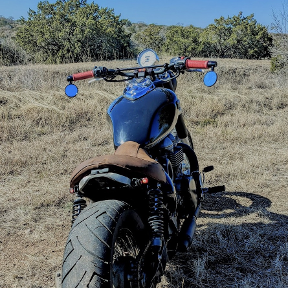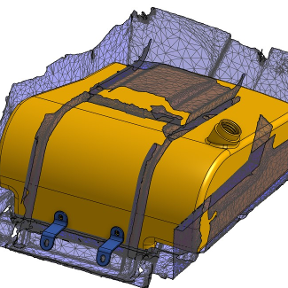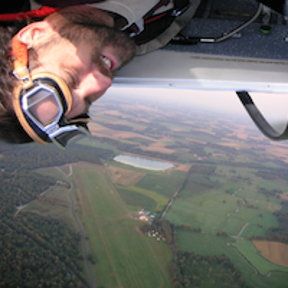Welcome to the Onshape forum! Ask questions and join in the discussions about everything Onshape.
First time visiting? Here are some places to start:- Looking for a certain topic? Check out the categories filter or use Search (upper right).
- Need support? Ask a question to our Community Support category.
- Please submit support tickets for bugs but you can request improvements in the Product Feedback category.
- Be respectful, on topic and if you see a problem, Flag it.
If you would like to contact our Community Manager personally, feel free to send a private message or an email.
Best Of
Do you really need Onshape Training?
[Bait]
Back in the day, I learned how to CAD at my university (UALR) using SolidWorks. Some years later, the Lord provided a place for me at a small company (CRM - who still makes cool products btw) that was using this crazy software called Onshape to design their furniture and remodels. It took me about 2 years to learn Onshape on a professional level. Allow me to save you 2 years of trial and error which you will be able to learn in only 2 weeks of training. All you have to do is complete Onshape's Learning Pathways at the Learning Center. That's right, completely free from the amazing Onshape Team! Even if you already "know" Onshape, you still need to take these if you are using CAD "professionally". You will become so much more efficient, in turn, speeding up your daily workflow.
.
[Switch]
Whether you have completed the pathways like a pro, or just need more hands-on getting started, CADSharp can help you out. We have some of the brightest Onshapers (Onshapists?) around, and can train you from scratch, or provide time saving custom tools and workflows to ensure your company is using Onshape efficiently. Don't need a hands-on meetings or custom workflows? That's ok, we also offer a direct support Slack channel to our CADSharp Pro users so you can get lightning fast responses to all your Onshape modeling or development questions.
.
Re: The Perfect Mouse for CAD
If only having the same mouse as you meant I had the same intellect haha.
Point Pattern Feature by Mate Connectors
When using Point Pattern feature, you can choose to pattern by points or Mate Connectors. For the former, the absolute orientation of the root feature/entity is preserved, which is correct. For the latter, the orientation of root feature/entity is also preserved instead of respecting the orientation of the local Mate Connector instance, which is not correct. At present, there is no functional difference when patterning by point or Mate Connector…they are redundant. Patterning by Mate Connector should function like patterning by axis-system in CATIA.
Re: The Perfect Mouse for CAD
^ Same here, it's nice. Hardly feels like you're holding a mouse. 62 grams, I think?
 _anton
_anton
Re: The Perfect Mouse for CAD
Not a huge fan of the mouse now that we have better tech, but since Onshape doesn't yet offer browser touch / pen support or spatial computing (Apple Vision / MetaQuest / etc..), we will have to use old faithful mouse and keyboard.
imo, CAD mouse / mice? are too heavy and slow down movement; but realistically, how fast do you need to be? I've tried the 3D Connexion Mouse. Also was really into some of Wacom's tablets for a time.
Here is what I'm using now, once you use it, it's hard to go back to anything else.
- 888+ IPS, up to 44,000 DPI (Extremely fast and low latency)
- Weight (Ultra light weight, helps for accurate movements)
- Grip (Allows you to grip from any angle quickly instead of forcing a specific direction on your wrist)
- Battery life (I charge it about once a month for an hour)
Also, there is no use in having a fast and responsive mouse if your monitor doesn't support it. I recommend something with refresh rate equal to or higher than 144hz and response time lower than 2ms. Yes, I know, this is CAD not gaming, but it's the same thing as far as tech and interface goes; moving 3d objects around and clicking buttons.
Re: The Perfect Mouse for CAD
@euan_dykes Oh yes, I can relate to your observations. As a full time CAD user for 30yrs+, I've also tried and rocked down quite a few mice: The standard ones, the apple ones, those with trackball or -pad and the fancy-buttoned ones. The worst time was when I had no choice but to use a company provided super fancy 100-button-CAD mouse and the small Apple keyboard without the number pad. My hand and arm hurt.
After going trough the loop, I finally came back to basics, but this time, having learned the hard way, more carefully chosen.
- I want a wired mouse, for I hate caring for batteries, and they're more lightweight, too.
- I tend to accidentally click on all the fancy buttons, so I like a clean mouse.
- Because of the resolution on all surfaces I chose a laser mouse.
- To help with that, I use a super thin self-adhesive 3M mousepad (costs more than a mouse, but good).
- Because of the click-and-hold index finger strain I chose one with higher klickforce, so I can rest my finger on the button without accidentally clicking anything.
- Because most of the strain comes from holding up the palm, it had to be one with a palm rest at the right position (I have large hands), but only at the right position. I don't like my hand getting sweaty due to overly large plastic contact surface.
- So I found the Dell Laser Mouse MS3220 and that's it. It was more expensive back then, but I stocked up on them - you never kow! Today, they're still around at half the price. ;0)
- I use a Spacemouse to complement it.
- The SpaceMouse is a wired one, too, and the most basic model at that, without many buttons (has 2 of them) I think it is called the 3DX Space Navigator. I've had this for many years already, there is a new model out now.
- I never use keyboards without a number pad, even my laptop has one.
The above might appear a bit like the poor man's CAD equipment, though it has turned out to be the most durable, reliable, hassle free and productive setup for me, and I didn't suffer any more overuse issues for a decade or so.
My worst experience, when it comes to CAD overuse and muscle strain issues, was demoing gesture controlled CAD in front of an 80" screen at an exhibition for a week. So, be warned and stay away from such ideas: These things do only work in SciFi movies. ;0)
Re: Avoiding accidental exit (or accidentally confirming) changes
Here, I'm done with the sketch:
You can now:
-click the greenbutton
or
-double click on Extrude 39
You don't have to click the greenbutton:
When you're done editing the extrude, Double click Mutual trim 5. You don't have to click the greenbutton.
And….. old dogs can learn new tricks, this old dog just taught you a new trick.
The cloud is different from that old traditional program. There's a flood of information flowing back and forth between your client & the servers with an amazing thing, they manage that traffic very well.
Please remember to be nice to old dogs.
 billy2
billy2
Re: How to sweep over a cylindrical face along a projected curve instead of a helix
just need to extend the profiles into the hub to eliminated the non manifold error. in this example I did one tooth and patterned it. I applied the fillet after the loft was well. then second example I just lofted the whole sketch as you had via the path then subtracted out the hole.
 MDesign
MDesign
Re: Fully-defined sketches: what are they, and why care?
I have a pretty decent Dell 32" 4K monitor. That's not the issue. The issue is that blue dots are almost indistinguishable from black dots. I don't have trouble with blue lines vs black lines, but the end points are often hard to catch in a complex sketch.
 S1mon
S1mon
Re: Routing curve & Control point curve - Introduction of two new features for 3D curve creation
@Matt_NC I've never used routing in SW, just wasn't interested so I can't comment on how they do it.
I'm working on many structures inside OS trying to create a parametric project for a piece of equipment. In the end, they want it as small as possible. I'm currently on my 4th layout or maybe 5th. I probably have a 100 more before I'm done which is why I have to get parametrics working well.
I'm using assembles mostly to handle plumbing bits. You might think its a lot of work to assemble the gaskets, end fittings, check valves…. but its really fast. Controlling plumbing in an assembly is the way to go. I'm using routing at the begin just to define where things need to go, from here to there, but assembling the plumbing using simple mates. The speed comes from windowing in a pipe segment, then copy & then paste. You get everything including the constraints. You can even copy to another assembly. I can't tell you have fast it is to design plumbing inside OS.
When you build a pipe run, you leave room for adjustments with slides and rotates. The inverse kinematics inside OS will solve the pipe shape after making a change. The only thing that changes currently in my parametric model is pipe length for straights. I solve these with in context. After an update all pipes lengths update connecting things together. I'm thinking of adding angles to elbows and solving this with inverse kinematics. Currently I'm thinking plumbing needs to be vertical & horizontal, If I need to pack tighter, then I'll start using angled elbows. With angles I could really pack the spaghetti tightly.
Oh yeah, the BOM's are correct and pipe lengths are contained in the BOM. I've set this up so I don't think about BOM's.
It's easy to compute route lengths including the arcs, so yes, let's do it.
 billy2
billy2








